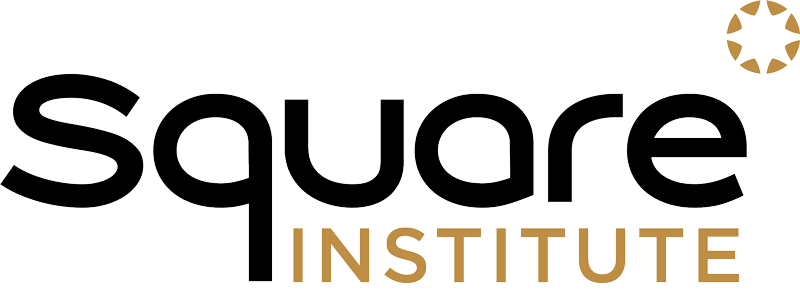
Agefi Luxembourg
– Avril 2022
The Regulatory Framework
The premise of “Responsable du Respect des obligations” (RR) and “Responsable du Contrôle du respect des obligations” (RC) takes root in the article 4 of the Law of 12 November 2004 as amended (“the AML Law”). Initially in this article, the CSSF mentioned that a “person responsible for compliance with the professional obligations as regards the fight against money laundering and terrorist financing” and “a compliance officer at appropriate hierarchical level” shall be appointed.
On 25th November 2019 the CSSF published a Q&A with new legal requirements that draws a picture of the two different roles and where for the first time, the RR and the RC acronyms appear. Since this publication, the regulator provided additional clarification through the FAQ dated March 2022 with regards the RC report.
In the meantime, by means of a Q&A dated December 14, 2020, the AED (Administration de l’enregistrement, des domaines et de la TVA) expressed its standpoint on the entities under its supervision, focusing on RAIFs.
The field qualifications for the RC position
Isabelle ERPELDINGER, who supervises a team of RCs at FundRock, believes that in addition to the prerequisites listed in the Q&A, it is essential to have a thorough knowledge of laws and regulations, but also to have experience in the fund industry and knowledge of delegated functions. A RC who has previous AML/KYC experience in a Central Admin or a previous Compliance Officer position will have added value in this role. It should also be mentioned that writing skills are expected as well as oral presentation skills during board meetings. Of course, a good command of the English language is more than essential. It is rather rare to see junior people in the marketplace taking on this role given the requirements and it should be remembered that the appointment of the RC is subject to approval by the Board.
Hervé BALLONE adds that experience, knowledge and integrity seem to him to be other important prerequisites for the position. Similarly, training, peer groups and supervision by the regulator tend to limit the qualitative disparities that still exist between RCs.
The rising & underestimated challenges
In order to carry out its mission, the RC must ensure that all contracts with delegates are up to date with the latest regulatory developments, that the governance of the fund (including the escalation process) is robust, that the procedural framework and risk appetite are validated by management and disseminated to all teams and delegates, and that it has the means to carry out its annual control plan.
As for Isabelle, she considers that the role, the responsibilities and the involvement linked to the RC function do not represent an easy position, on the contrary. She would like to emphasize that the role is not simply to prepare and present a quarterly RAG report. According to her, there are constraints and difficulties that must be taken into consideration in certain cases, linked to external factors that are independent of the RC and its function. The requirements of the Board members, the regulator, the auditors and any other actor come into play and do not make life easy for the RC who has to deal with the Central Admin and Transfer Agents who do not have the same principles, the same monitoring or reporting tools.
To this, we must add a time factor that depends on the number of authorized mandates (which can often be at maximum capacity) but also on the complexity of the funds. This complexity can be due to the type of fund (regulated or not) but also to the delegates with whom the RC is in contact and who are involved in obtaining the
information necessary to monitor the fund (KPI/KRI).
The relationship established between a RC and fund boards
The type of relationship between a RC and the board is above all a relationship of trust.
The RC is not only selected on the content of his or her CV reflecting years of experience in the fund industry, but also on interpersonal skills. The Board entrusts a mission of the utmost importance to the person who is committed to compliance with the laws and regulations affecting the fund. The board wants assurance but also guarantees, which is why a preliminary consultation between the two parties ensures that the relationship will be effective and meet expectations.
From Isabelle’s experience, the Board expects the fund’s RC to be actively involved, not just at quarterly meetings.
It wants to be informed of any potential risks or events that may have an impact on the fund. Therefore, the RC must assume an advisory, support and attention-grabbing role by escalating all relevant and necessary information on an ongoing basis.
Obviously, there remains the more editorial part through the reports, AML Policy, AML Risk Assessment and support on Risk Appetite, on which the RC has a considerable burden and responsibility. But if the relationship is not optimal and doubts or concerns arise about the reliability of the RC, the Board takes a risk in approving these documents.
As Hervé also states, if a sporting parallel can be drawn; there is the coach and his player — a contract of trust.
The first one makes sure that the second one is in the best possible conditions to carry out his tasks, defines the strategy and validates the requests if necessary.
The second ensures that the strategy previously defined by the first is respected, carries out the daily tasks that are allocated to him, reports information and proposes solutions for decision making.
Responsibilities and positioning of each: when the RC becomes a critical stakeholder
The roles and responsibilities of each party must be clearly stated contractually, as well as in the procedures and risk appetite. Under these conditions, although linked, their responsibilities are different — as Hervé describes.
According to Isabelle, it is obvious that the RC acting Intuitue Personae engages his own responsibility and has obligations towards the regulations in force as well as towards the Board which will be composed in a more general way by several members. Taking into account the RC’s tasks and the decisions he has to make, it can happen in certain situations that critical elements arise and that his stance (or in other words, the commitment of its responsibility), is perceived as sensitive.
Nevertheless, as mentioned above, it is a relationship of trust and communication between the RC and the Board.
This means that in terms of responsibility, in case of bad decisions or inappropriate actions that would result in a risk for their function, the consequences will be shared. As one said, this can be summarised as “we rise or fall together”.
However, it is not uncommon to see cases where the Board prefers to disassociate itself from the RC and expects him to be the sole decision-maker or position-maker on situations in which he must remain ultimately responsible.
Prospects for the evolution of RC in the face of new regulatory measures and the regulator’s heightened expectations
Closely linked to the growth we are experiencing in the financial market and the current trend in the evolution of investment funds, the role of the RC can only develop and require even more knowledge and skills. This knowledge
is not only based on AML, but also on a deeper understanding of the increasingly complex fund strategy.
The risk assessment of funds is evolving in the same way as the Risk Appetite, the RC must adapt and be able to master these evolutions. Evidently, the RC must always be alert and trained with regard to regulatory changes and the expectations of the regulator who, as a reminder, can summon him at any time for an individual interview.
There also remains the monitoring of the number of RC mandates of funds authorized by the regulator. It is evident that in order to carry out and conduct this position, this number must be respected and must not become critical.
The reports will also have to evolve in order to provide more relevance and granularity. Boards have requirements and they want more depth in the analyses performed by the RC. The ALCO has worked on a template that can be used as it is quite detailed, but of course the RC is free to define the form and content.
In the final analysis, Isabelle and her colleagues note that it is increasingly difficult to find suitable profiles because the demand for this role is high and competition is increasing.
As for Hervé, who completes Isabelle’s observations, according to him, the function’s main goal is to prevent, identify, detect and evaluate the risks of non-compliance by setting a framework allowing professionals to comply with laws and regulations.
While this assignment is still central to the function, the many regulatory changes, new societal issues and the current pandemic have transformed it.
Thus, the RC function has become even more firmly anchored at the heart of the company’s strategy and governance. It has also become a “facilitator & advisor” connected to the business and capable of convincing, influencing and communicating on the “why” and the “how”.
The RC plays a key role in the governance of the professional under the supervision of the CSSF and the AED. And regardless of the type of fund, both authorities seem to concur on the requirements & guidelines.
However, perhaps we will notice an emerging trend in the market to take on RC for other types of non-supervised funds. The question is therefore whether the remit of the RC will evolve or even become more complex.
Par Cristopher Bauduin, Manager Consultant Square.
AUTRES ACTUALITÉS EN REGULATORY & COMPLIANCE
The RC role – Troublemaker or Trusted Partner?
Paru dans AGEFI Luxembourg
Blockchain and crypto-assets, a Compliance perspective
Paru dans AGEFI.
De la dispersion à l’alignement progressif
Paru dans Revue Banque.




